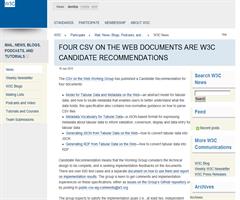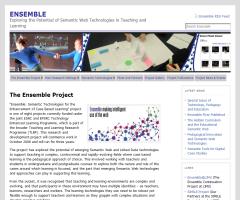Publicado por Equipo GNOSS
29/07/2015
CSV (Comma Separated Values) es un formato antiguo, pero muy usado, de intercambio y publicación de datos en formato tabular. En el Grupo de Trabajo CSV on the Web, del W3C, se le está proporcionando una nueva vida, convirtiéndolo en un estándar Web de publicación de datos, incluyendo la declaración de formatos. La propuesta de estándar consta de estos 4 documentos: Model for Tabular Data and Metadata on the Web. Un modelo para datos tabulares, y sobre como colocar metadados que permitan a los usuarios comprender de qué tratan los datos. La especificación contiene también guías no normativas sobre como procesar ficheros CSV. Metadata Vocabulary for Tabular Data. Un formato JSON para expre...
Categorías




